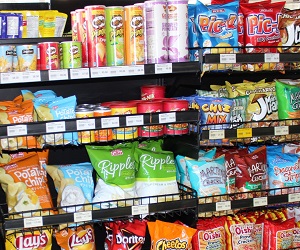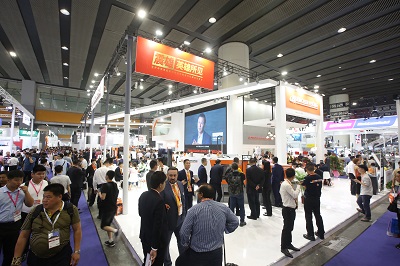Southeast Asia is one of the fastest growing economic blocs in the region. The Asian Development Bank (ADB) projects the region’s GDP to increase by about 5% in the next 12 months. The continued growth in the disposable incomes of families has been driving demand for food and beverage (F&B) and this has been spilling over to allied segments, such as plastics and packaging. These countries have either reached or are about to reach demographic sweet spot – i.e. millennials with higher disposable incomes comprising bulk of their workforce. Major economies in the region such as Thailand, Indonesia, Malaysia, Vietnam, and the Philippines have been fueling demand for F&B packaging and this is likely to be sustained in the near to medium term on the back of stable macroeconomic fundamentals. As a result, several firms engaged in F&B and plastics manufacturing and packaging have been eyeing the Southeast Asian region as their next major market.

Mr. Joey Roi Bondoc, Senior Research Manager at Colliers International Philippines
Keen interest in Thailand
In Thailand there are enormous opportunities for plastics manufacturing; a great majority of these hinge on a strong food and beverage (F&B) segment. According to the Thailand Board of Investments, some $1.6 billion of investments were funneled into the sector from 2015 to 2018. This is shown by strong investments in Thailand’s Food Science Park which has attracted investments from several companies headquartered in the United States, United Kingdom, Japan, Taiwan, and Singapore. The growth is likely to be anchored on sustained economic expansion as the country’s gross domestic product (GDP) is projected to rise by 3% in 2020, according to ADB.
F&B manufacturing, which partly propels the packaging sector, is one of the fastest growing industrial subsegments in Thailand. According to Colliers International Thailand, food is one of the priority areas for industrial investments, along with biofuels, biochemicals, and medical equipment. Investors from China and Japan have expressed interest to invest more in Thailand’s manufacturing segment and this should further benefit key manufacturing segments, such as food and packaging. Another interesting development for Thailand is the planned implementation of Thailand 4.0 which covers the development of a new model for industrial development and ensures that the Thailand food industry is able to meet the constantly-evolving global demands. This initiative should result in greater industrial space absorption in the country.
Indonesia offers vast potential
Being the third fastest growing economy in the Group of 20 (G20), there is tremendous potential for Indonesia’s plastic industry especially as this is driven by its thriving F&B sector. Its Industry Ministry estimates that Indonesia’s F&B sector is currently worth $4.6 billion. The country is estimated to have over 260 million consumers. Among the products that are enjoying strong demand in the country are fruits, vegetables, seafood, gourmet food, tea, coffee, and packaged food. The latter indicates enormous opportunities for plastics packaging. Government data also show that continuously growing domestic economy and upgrading lifestyles (professionals choosing convenience) have raised the demand for packaged food in the country.
The F&B sector is one of the fastest growing manufacturing sectors in the country, along with leather and footwear, machinery and equipment, and textile and textile products. Its contribution to the Indonesian economy has steadily been growing, being the largest non-oil contributor to the country’s GDP. With sustained macroeconomic fundamentals and a mobile and young workforce, F&B is expected to grow steadily and this should propel the demand for more packaging products in the country. Indonesia’s GDP grew 5.2% in 2018 and ADB sees the country’s economy expanding by an estimated 4.7% in 2020.

Malaysia’s large food exports market
Over the next 12 months, the World Bank expects the Malaysian economy to grow by about 4.5%. The country has a large F&B export market, with oils and fats among its major export products. Domestically, its F&B market is driven by cocoa and chocolate products, fishery products, processed fruits and vegetables, food ingredients, and herbs and spices. A key driver of Malaysia’s F&B sector is the Halal industry as the country intends to become a major Halal hub in the world. Malaysia aims to corner bigger slice of the global market that is estimated at $2.3 trillion.
Over the near to medium term, the Malaysian government is projecting a moderate growth for its packaged F&B sector. This is partly driven by continuously increasing disposable incomes of a young workforce and the growing preference for convenience foods. These indicators suggest that the demand for packaged food is likely to grow in Malaysia in the next few years and this should entice manufacturers of packaging products to infuse more investments. At present, among the foreign F&B firms in Malaysia are Nestlé, Ajinomoto, Activ International, Campbell’s, Cargill, Gardenia, Haco, Kerry Ingredients, Yakult and Coca-Cola.

Vietnam as haven for F&B investors
The economy of Vietnam grew by an average of 6.2% per year from 2010 to 2018, one of the fastest in Asia. As a result, the purchasing power of its population also increased during the period with consumer preference shifting towards more convenient and packaged F&B. The country’s F&B manufacturing has been rising by an annual average of 7%. Vietnam’s officials have been enticing more foreigners to invest in the country’s F&B sector and this has been spilling over to the packaging segment.
Vietnam is a major exporter of agricultural products and the processing of agricultural produce into higher-value items has been benefiting the packaging sector. The domestic demand for processed food is also being driven partly by a young population and the popularity of processed food. Supermarkets and convenience stores have sprouted across Vietnam. At present, multinational retailers that have established footprint in Vietnam are Circle K, 7-Eleven, B's mart, Family Mart, MiniStop, Big C, Aeon and Lotte. The retail and industrial sectors are likely to benefit further from a burgeoning F&B and plastics segments in Vietnam.
Philippines packaging sector to surge
The Philippines is one of the fastest growing economies in Southeast Asia. From 2010 to 2018, the country grew by 6.3% per annum. This has resulted in a higher GDP per capita during the period, providing Filipino consumers with greater disposable incomes. Higher purchasing power per capita has been driving the demand for manufactured F&B in the country. The Services sector is one of the country’s major economic pillars and this has been growing on the back of a strong business process outsourcing (BPO) sector which mainly employs millennial workers who prefer packaged F&B due to convenience.
The country’s processed F&B sector is domestically-driven, with an estimated 90% of packed F&B consumed locally. The packaging sector in the country is expected to grow over the next decade as the Philippines is primarily a domestic driven economy. Household or personal spending accounts for about 60% of the country’s GDP. At present, about 30% to 40% of retail space is occupied by F&B retailers, also presenting enormous opportunities for F&B packaging. Similar to other economies in Southeast Asia, the Philippine workforce is also driven by young and mobile employees, who contribute to higher demand for processed F&B. Foreign F&B manufacturers have been occupying industrial land and warehouses across the country to cater to a growing domestic demand. Moving forward, opportunities for F&B and allied sectors such as plastics packaging are the Philippines’ trade deals with the European Union and other Asian countries. Aside from the development of more industrial parks across the country, property developers in the Philippines are also encouraged to establish and modernize warehouses to support the growth of fast-moving consumer goods. Colliers International Philippines believes that greater demand for F&B is likely to spur the need for more warehouses. This should be complemented by an improving infrastructure network throughout the country. IRNA














